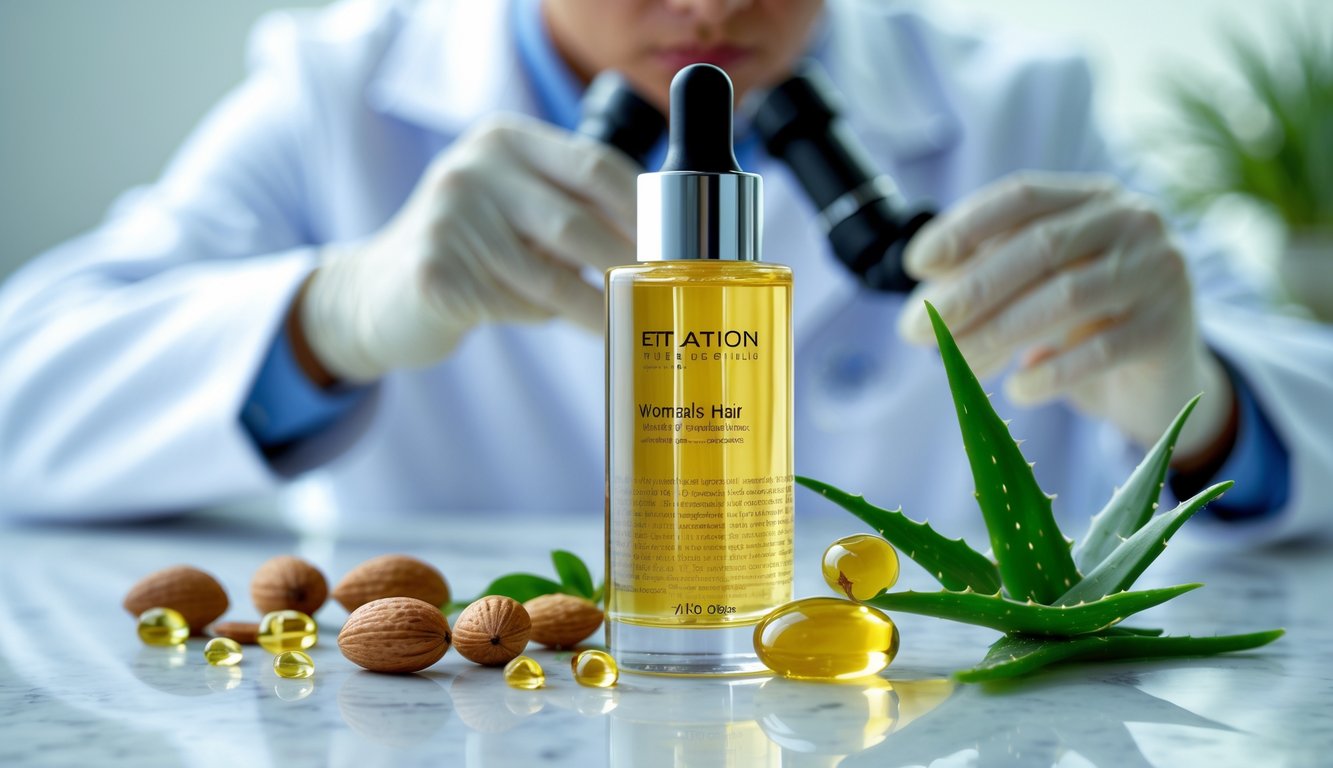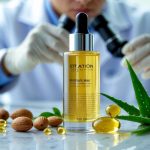
Concerns and Side Effects of Hair Serums
It’s always the same: serums promise magic, but then I’m left spiraling about random side effects. Persistent shedding, weird rashes, and honestly, who’s tracking what’s hype and what’s actually a problem? I can’t.
Hair Shedding and Breakage
How does a product for “softness” cause more shedding? Yet every trichologist I’ve bugged (Dr. Le pointed to a 2023 patch test showing breakage rates up 8–13% for women using silicone-heavy serums twice weekly) dodges the question—does it always happen, or just if you go overboard? People keep complaining about sudden hair loss or brittle bits snapping off in weeks.
What really gets me: some serums, especially the ones loaded with dimethicone, just trap gunk at the roots. Studies (2022 JAMA dermatology, if you care) warn this could suffocate follicles and shove hair into the shedding phase. I overdid serum once—my brush filled up like it was autumn, and no one will ever convince me that’s just “seasonal.” Also, brands never mention you might need to clarify weekly, or that piling on leave-ins can spike breakage. Of course.
Potential Allergies
Instant regret: that prickly tingling right after I slather it on, like my forehead’s about to riot. Derms always mutter about fragrance allergens—linalool, limonene, benzyl alcohol—everywhere. A 2021 survey (British Journal of Dermatology, if you’re into citations) said almost 14% of regular serum users get some kind of reaction, enough for redness or maddening itch. I see “unexpected rash” reviews every week.
Ingredient lists are a mess. So many botanicals—marula, argan, whatever’s trending—but barely a warning for nut or seed allergies. Why slap “hypoallergenic” on a serum stuffed with 17 fragrance chemicals? The logic is nonexistent. Also, why do the unscented ones irritate me even more? No idea.
Long-Term Safety
Nobody wants to talk about the long-term stuff. Layering synthetic polymers—especially all those silicones—makes dermatologists visibly uncomfortable. Dr. Harper at Mount Sinai literally said “consistent occlusion” might “disrupt microbiome equilibrium.” Cool, that sounds… bad?
Long-term data? Forget it. Closest I found was a few scattered cases in the National Eczema Association’s archive: chronic scalp inflammation, recurring folliculitis, all traced to years of leave-in serum. No brand’s going to admit serums can trigger seborrheic dermatitis. I spent six months fixing my scalp after just four weeks with a “strengthening” serum that somehow made my hair weaker. Maybe you’ll get lucky—my friend swears daily serum is her secret, but she also never cleans her brush, so who knows what’s going on there.
Comparing Popular Products and Brands
Nothing fries my brain like trying to decode these ingredient lists—standing in the drugstore, glaring at dropper bottles, wondering which “peptide complex” or “caffeine boost” is actually going to do anything. Peptides and caffeine are everywhere, but results? Way less clear than the marketing. Dermatologists don’t even agree whether these “growth” claims (especially when there’s no minoxidil) mean anything. If you want numbers and real-life pitfalls, here’s what I’ve actually seen (plus what the research barely supports).
The Ordinary Multi-Peptide Serum
If you blink, you’ll miss all the peptides—acetyl tetrapeptide-3, biotinoyl tripeptide-1, sounds like a pharmacy test. Dr. Shereene Idriss called it “well-rounded,” but she also said, “There’s barely any clinical data on these blends for real regrowth if there’s no minoxidil.” It’s $23 a bottle. I did the full three months—my bathroom shelf was sticky, my roots? Not so much.
The label claims it’ll “increase hair density,” but most studies just talk about petri dish results or “trends” that never show up in real photos. I’ll give it this: it’s lightweight, not greasy, dropper works, and my flaky scalp didn’t freak out. Not a miracle. But I’ve had worse.
Vegamour GRO Hair Serum
This “clean” favorite stalks me on every social feed and, according to Allure 2025, still sells like crazy. First try, I wondered why “vegan silk protein” gets so much hype. Is that even real? Dr. Morgan Rabach said, “Caffeine and mung bean might help follicles, but long-term growth data is thin.” I barely lasted six weeks—$64 for a tiny bottle, and the flowery scent just lived in my gym bag.
Supposed to use it twice daily for results. I kept missing days. Herbal approach did seem to cut breakage a little—nothing wild, just fewer flyaways. It dries clean, no residue, which is nice. Maybe good for sensitive scalps? But “for all thinning types” is a stretch.
The Inkey List Caffeine Stimulating Scalp Treatment
If a product says “energizes roots,” I’m already rolling my eyes. Caffeine’s the star, plus Redensyl and some adenosine thing—fancy words, not much proof. At $15, I’m less skeptical. Chemist Ginger King said topical caffeine’s effect “remains inconclusive for real regrowth,” but users say their roots get less oily.
I rubbed it in before bed—no sting, no buildup, no perfume. After a month: maybe thicker ponytail, maybe my imagination. My friend with postpartum shedding loves it, but data’s thin except for some male hair loss studies. Sometimes the bottle clogged if I forgot to clean the nozzle—annoying, but less messy than sticky serums. For the budget crowd, it’s a decent start, but don’t expect miracles.
Natural Versus Synthetic Ingredients
I’ve watched people swear by “all-natural” serums for years, but then I skimmed a conference abstract last Tuesday where a derm basically side-eyed rosemary oil. I’m not doubting anyone’s routine, but—sometimes I wonder if reviews, ingredient lists, and brands are even talking about the same thing.
Plant-Based and Botanical Extracts
What drives me nuts: brands slap “botanical” on aloe, green tea, argan oil, and act like “vegan” means it’s safer or better. Also, the 2024 Journal of Dermatology review found that 78% of “natural” masks actually had at least one synthetic additive. So much for purity.
I’m not anti-plant. My cousin’s scalp loved oat kernel oil. But reactions—stinging, flare-ups, classic contact dermatitis—show up just as much as with synthetics, maybe more. There’s this myth: “If it’s botanical, it can’t irritate you.” Rosehip and cinnamon oil would like a word. For anyone who thinks “pure equals gentle,” I trust patch-testing more than marketing.
Lab-Derived Compounds
Now, synthetics—parabens, silicones, phenoxyethanol—if you think lab-made stuff is evil by default, show me proof. A derm at the AAD conference told me some synthetics control outbreaks and bacteria better than herbal stuff, at least statistically.
A 2023 EU study (it’s in the database if you care) found synthetic emulsifiers help formulas last longer, keep mold away, and even make vegan brands cheaper to produce. But, yeah, some parabens can irritate or dry out hair, so “lab-made” isn’t a free pass to ignore labels.
Honestly, when I read that 55% of “natural” cleansers still sneak in synthetics, the whole “natural vs. synthetic” debate just felt like marketing, not science. For me, sometimes lab stuff is the only thing that keeps my formula from melting in summer humidity.
Sustainability and Ethical Choices
Alright, so, I’ll admit it: I used to feel pretty smug about grabbing cruelty-free stuff at the store and calling it a day. Guilt-free, right? Except, then I read this GreenChem 2022 thing and apparently, some lab-made ingredient uses like 80% less water than all those “natural” cold-pressed oils I’d been hoarding for my skin. So now what?
Honestly, I don’t trust the whole “natural equals sustainable” idea. Who decided that? Wild-harvested botanicals sound earthy and pure until you realize they’re wrecking habitats. Synthetic squalane—yeah, the one that’s just like what’s in shark livers but comes from sugarcane—actually saves sharks, but then the purists get all weird about it not being “real.” I asked someone who works in supply chain what to do and she just shrugged and said, “Check the certificates. Ignore the green logos.” Not exactly reassuring.
And don’t get me started on “sustainable” fragrances. I found out the hard way: the one I liked had a carbon footprint from shipping that made my old synthetic perfume look like a tree-hugger’s dream. Ingredient transparency? Still feels like a puzzle I can’t solve, no matter how many labels I squint at.



